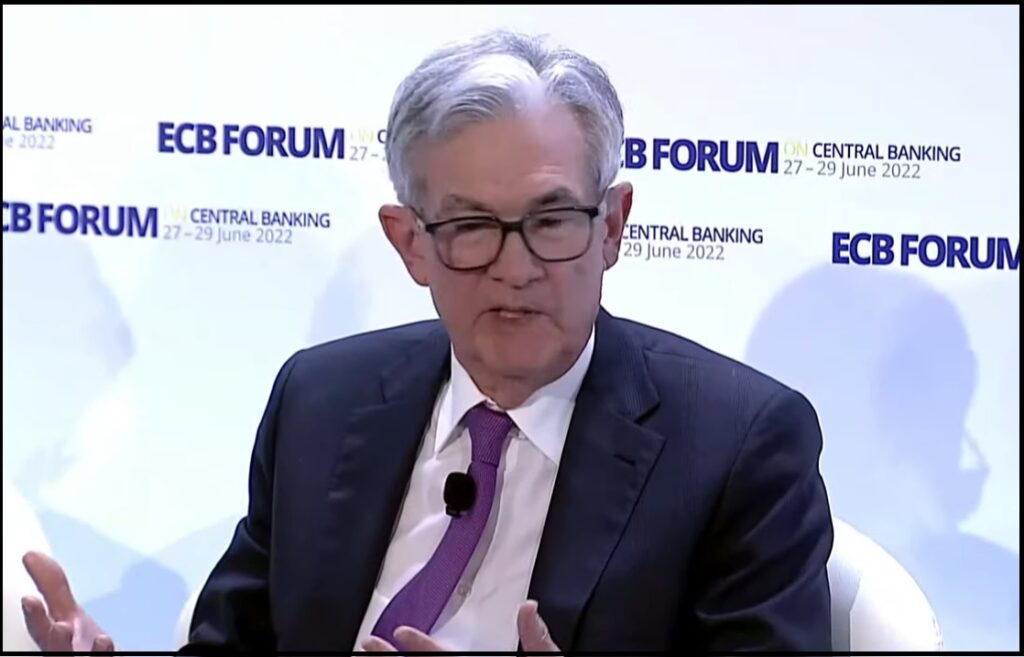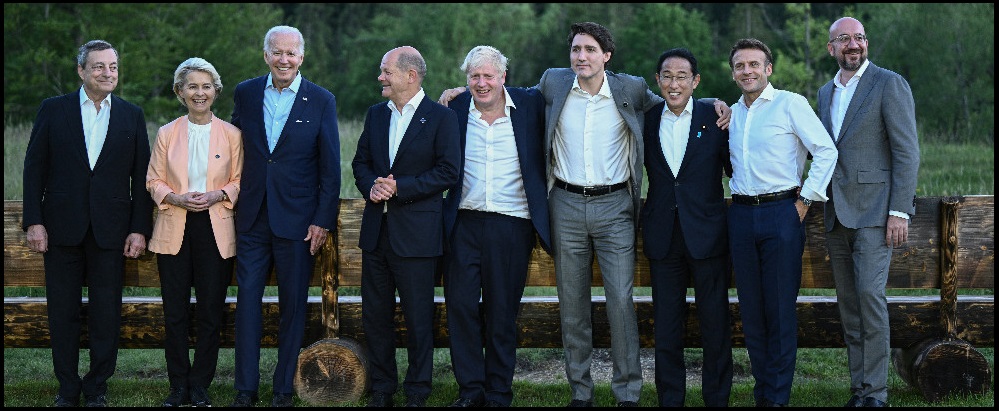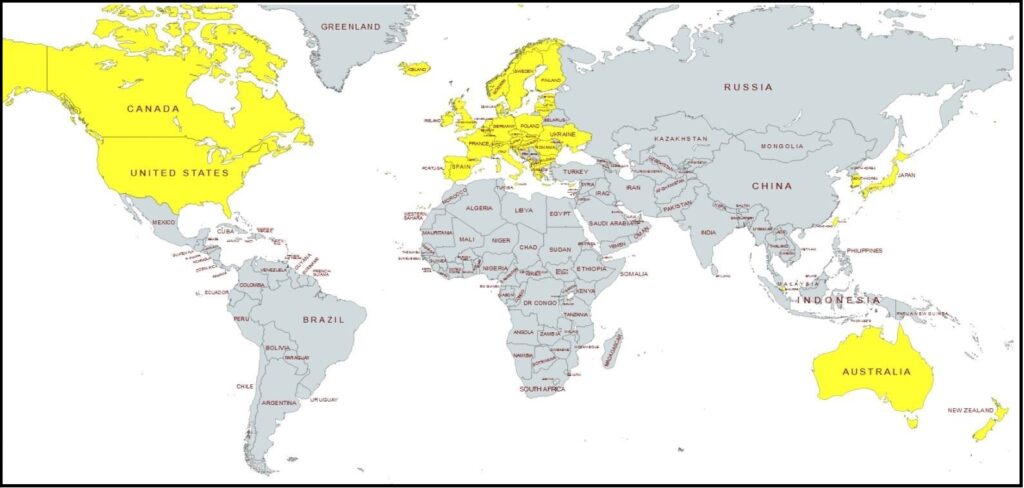SecTreas Yellen Declares Lower Economic Activity and Higher Energy Prices are Good During Our Transition to Windmills
Until people understand what is happening, we cannot correct things or even respond to them accurately. Many people don’t want to accept what is happening. Even more still believe in the Schoolhouse Rock civics they were taught in grade school and cannot accept how these ideologues operate. As long as denial remains a survival mechanism, correction is difficult.
All of the people on the monetary policy side of the economic equation are working earnestly to manage the global economy into a decline thereby slowing the need for energy production. The bankers are supporting the Build Back Better policy makers by putting the western economies into an intended contraction. Slowing the western economies helps to lower energy use and moderate/offset the extreme increases in cost (coal, oil, gas, electricity, fuel etc) the policies are creating.
Lower economic activity means less income, job security and wealth for the working class. Simultaneously, increased energy costs mean more expenses for the same workers who are losing income and wealth. This is the ‘managing’ part of their collectively “managed transition.” They are monitoring and managing the pitchforks.
In this Meet the Press segment with Treasury Secretary Janet Yellen, you will note she says “lower economic activity during this transition” is good. She also happily says businesses are taking “appropriate” action to lower their activity, because that is exactly what the central planners want. They want businesses to do less, create less, sell less, even employ less, because ultimately, they want businesses to help advance the cause of climate change by consuming less energy resources. WATCH:
The central bankers are trying to support western government policy. Unfortunately, the government policy they are under obligation to support is the fundamental energy shift, or what the World Economic Forum (Davos Group) has called the “Build Back Better” climate change agenda.
Monetary policy can only impact one side of the inflation challenge, the demand side.
The western bankers (EU central bank, U.S. federal reserve bank, and various banking groups) are raising interest rates in order to “tame inflation” by “taming demand.” However, as you know the global economic demand has been declining for several quarters. Raising interest rates into an already contracting economy only does one thing, it speeds up the rate of economic contraction.
Economic contraction is the lowering of economic activity. Raise interest rates -in a general sense- and businesses invest less, borrowers borrow less, consumers purchase less, employers expand less, and the economy overall slows down. When the economy turns negative, meaning less products and services are produced, we enter a recession. Some businesses and employers do not survive a recession and subsequently unemployment rises.
During recessionary periods people buy less stuff, people have less income stability, and economic activity drops. When the banks raise interest rates into an economy that is already stalled or contracting, unemployment and general pain on Main Street increases. Workers are laid-off, incomes shrink, consumer spending drops and that leads to less employment. Recessions are bad for middle-class and working-class people.
However, that said, there is one benefit from a recession…. Energy use drops.
People travel less; businesses operate shorter work schedules; manufacturing stops; overall fewer goods are produced because less consumer spending is taking place. From the perspective of the groups who want to see overall energy consumption drop, a recession is a good thing.
A recession also brings along a natural drop in energy prices as less overall energy is used inside an economy that is slowing, stalled or contracting.
Oil prices drop as less oil is needed for the manufacturing of goods. Energy use in transportation also drops and generally gasoline prices drop because less transportation fuel is needed, because fewer goods are being transported. When the economy goes into a recession, energy use and prices always drop.
Put these factors together and you start to see how the transition to a new western energy policy, the Build Back Better agenda, benefits from a recession.
This is the essential understanding needed to reconcile why central banks would intentionally create an economic contraction. The bankers are supporting the governmental objective of transitioning the western economy into a new energy system away from oil, coal and natural gas. The banks are supporting the policy makers.
The central banks cannot openly admit what they are doing to support the politicians and policy makers. In this weird new era, the banks are being instructed to support the policy makers without actually admitting they have changed their monetary mission. The central bankers will continue to say their job is to manage and/or balance employment and inflation. However, what they will not admit is their unspoken agenda to support the political decisions.
 Instead, almost all the central banks are saying their interest rate hikes are intended to cool inflation by lowering demand. However, it is not demand that is driving inflation; it is the policy making behind the energy transition that is driving higher costs on everything.
Instead, almost all the central banks are saying their interest rate hikes are intended to cool inflation by lowering demand. However, it is not demand that is driving inflation; it is the policy making behind the energy transition that is driving higher costs on everything.
The supply-side of the inflation dynamic is being overwhelmed by massive increases in energy costs which are the results of intentional western policy. Extreme increases in consumer prices are the outcome of these energy price increases. The overwhelming majority of consumer price inflation is being caused by energy policy, not demand.
The various central banks and monetary policymakers know this. In fact, they are lying about their motives. They have to lie, because if they were to tell the truth there would be an uprising, and the sucess of the energy agenda would be put at risk.
In order to support the energy objectives of the various governments’, the central banks are trying -and succeeding- to lower economic activity.
Less economic activity means lower energy needs. This is what they call “managing the transition” to the new economy based on “sustainable energy.”
The banks and policy makers are ultimately managing the economic decline in order to Build Back Better in the future. This is why the originating charter of the central banks is being ignored, and the banks are raising interest rates into an already contracting economy.
None of this is being done accidentally. All of this is being done with forethought and implicit intention.
Unfortunately, for the average person this means the banks and policy makers have entered a phase where it is in their interests to shrink the global economy. They are trying to control the collapse of the various economies by working together. This means less jobs, less work, a lower standard of living, and a period of extreme financial pressure for the average person.
Eventually, we will reach a point where the government(s) will need to step in and fill the gap from the declined economic activity. Bailouts and subsidies will be needed as they were in the COVID lockdown test run. Unemployed workers and the people being impacted by a prolonged economic recession will need subsidies in order to survive.
The government policy makers are planning to do just that, spend more. They practiced during the COVID economic lockdowns, now they will execute a similar policy path as they manage the energy transition.
We have only just entered the beginning phase of this Build Back Better agenda. No one, including the banks and policy makers, have any idea how long this is going to take. We could be in this period of severe economic contraction for several years, perhaps decades, until their grand design of a new energy future is complete. This has been the discussion at the World Economic Forum (WEF), as the instructions were passed out.
The entire time the western government architects are doing this, they must keep the demand for traditional energy products like coal, oil and gas at the lowest demand possible. That is why the central banks and politicians must keep economic activity at the lowest -yet survivable- rate possible.
Prepare your informed long-term affairs accordingly.







Post a Comment